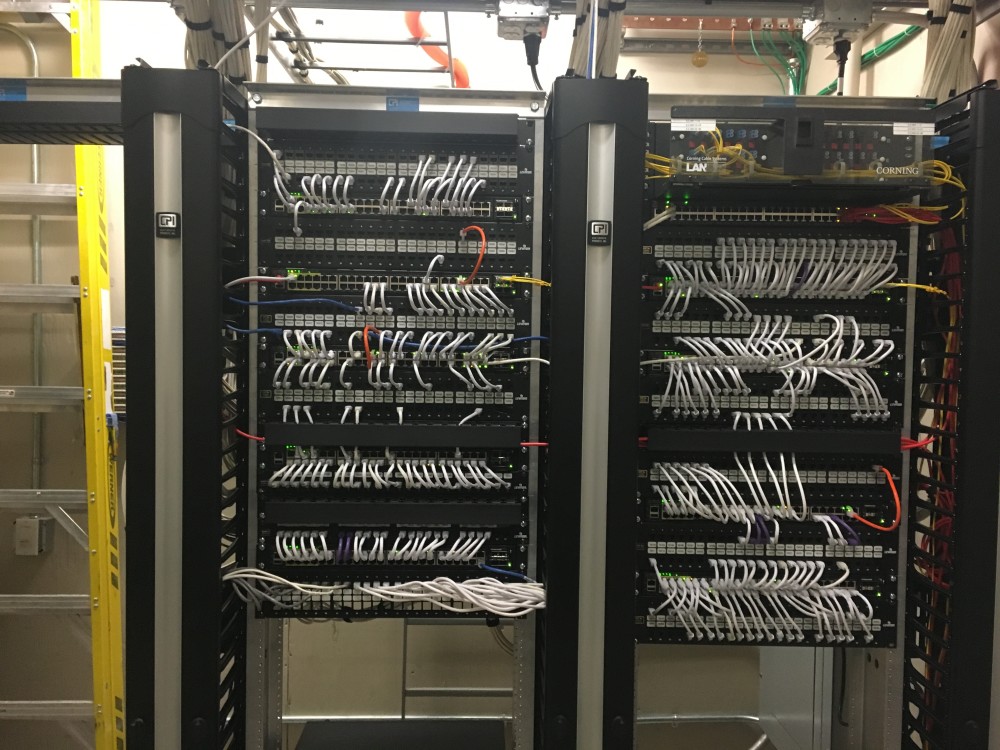Posted by Desiree Silva, IT Communications Officer, UCM. In November 2014, the Office of Information Technology (OIT) at UC Merced began a campus-wide upgrade to provide a faster, more robust internet service to faculty, staff, and students. The Next Generation Network (NGN) project is expected to take 12 to 18 months to complete and will improve network, speed, reliability, and stability for more than 20 campus buildings.
A Change Long Overdue
With the campus’s increasing population, a faster, more reliable network became a critical necessity. “It is essential that we have a state-of-the-art network infrastructure to support the kind of growth that we anticipate. Our design anticipates high speed, high demand, and the best firewall technology for individuals and research data security,” said Keith Hughes, NGN project lead.
After ten years of stretching the original network equipment to the limits of its capacity, the OIT staff began the daunting task of replacing thousands of old routers, switches, and wireless access points to increase wireless speeds at least ten times.
The First of Many
The Kolligian Library was the first building to receive the upgrade. The conversion took three days to complete with a team of vendors, OIT staff, and employees from several campus departments.
Al Espinoza, Infrastructure Services Director, credits the success of the upgrade to the collaboration and constant communication between all parties involved. “The support we received from the administration, staff, faculty and students, along with a community of vendors, aided in a successful upgrade with little downtime,” he said.
Challenges
While most everyone agreed the project was an important step in reaching the goal of providing a faster more reliable network, some issues needed to be addressed, such as communicating the project to students, staff, and faculty.
“One of our biggest challenges was ensuring the campus community understood why OIT was embarking on this project, as well as making them aware of any downtimes and what to expect when the upgrade was complete,” Espinoza said.
The project team held weekly meetings with all stakeholders; communication was also distributed campus-wide as well as directly to the affected departments. A goal was to get full cooperation of all parties impacted by and involved in the changes. “Sometimes what seems like an obvious benefit to us in IT is completely unimportant to some stakeholders,” said Hughes.
Practice Makes (Almost) Perfect
The NGN project team took notes of each step. Their detailed accounts helped build a template for future building configurations. “When it came time to upgrade the next building, we were able to use the model from the building before and stage and test each step in the process. That allowed us to work out any bugs beforehand,” said Hughes. Espinoza agreed that “creating a successful template was crucial in ensuring the entire project could be completed on-time, not just the first building, but all buildings.”
The Results
In January 2016, the team successfully upgraded the second building, and is ready to tackle the task of improving the next 18 buildings. “Thanks to our excellent integration team we are keeping the lights on and planning for the next stage of the upgrade,” said Hughes.
Espinoza is confident the best practices they have learned during this project will be used to provide the campus community with a network that will grow with the university. He said, “This project will end, but our commitment to providing a scalable system to keep up with demand is just beginning. We realize this is not just a place where people work or hang out; this is a place where they learn, live, socialize and we plan to be there at every stage.”

